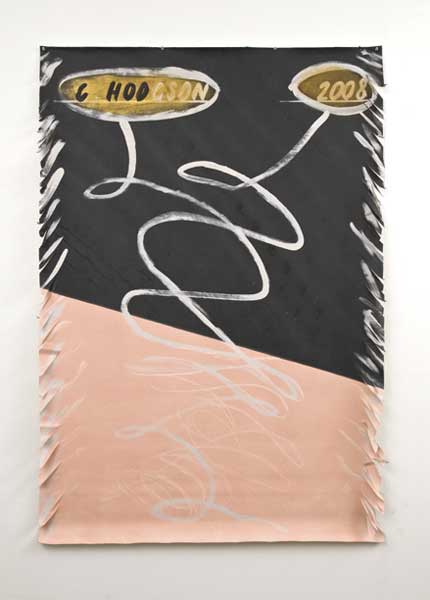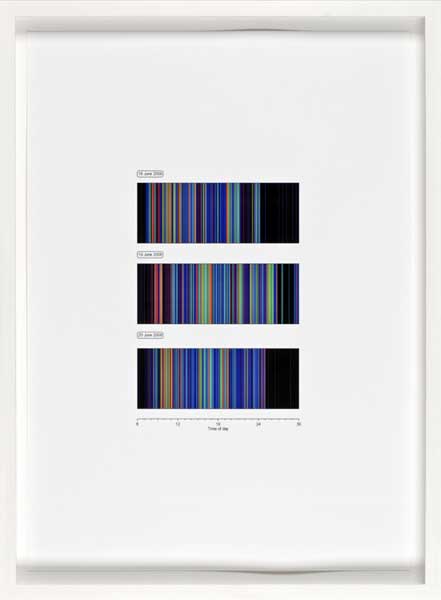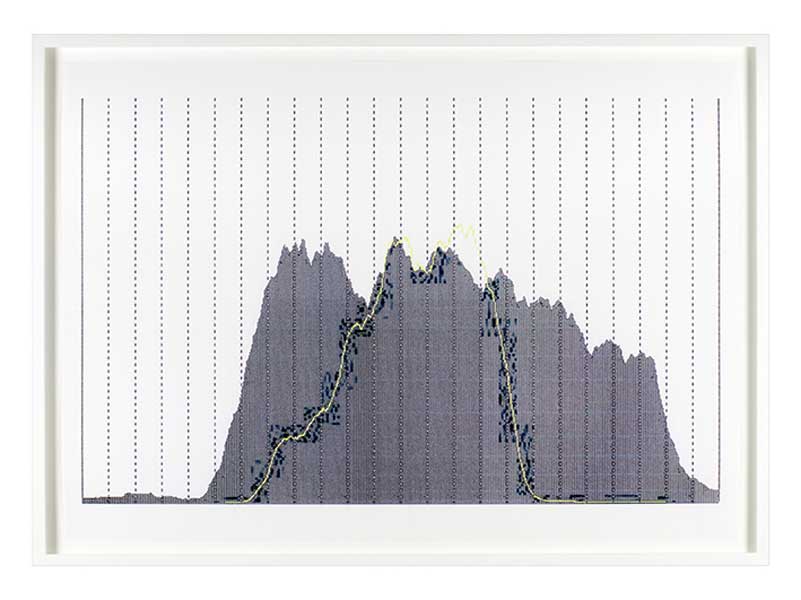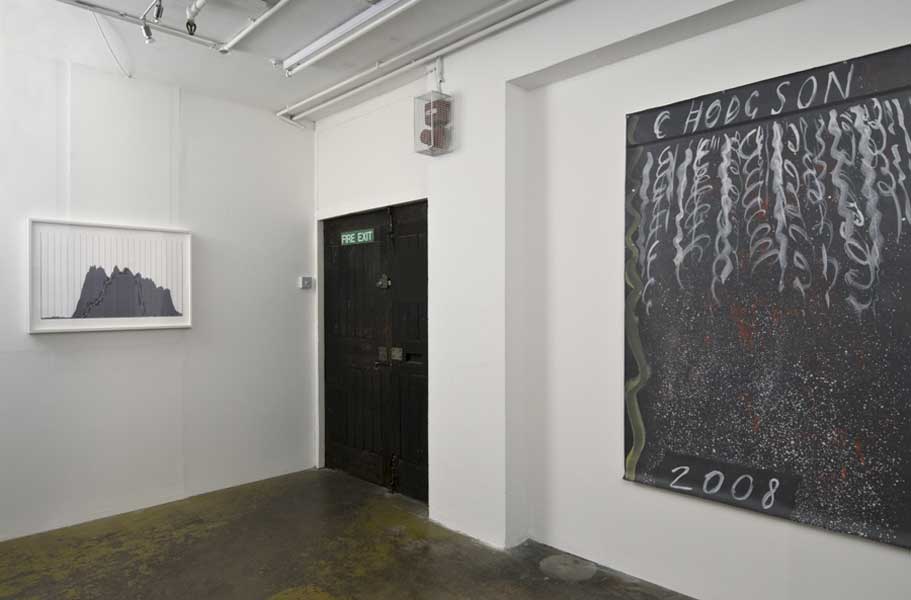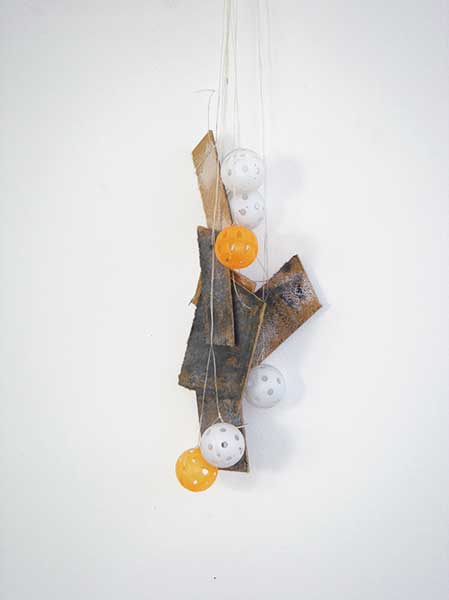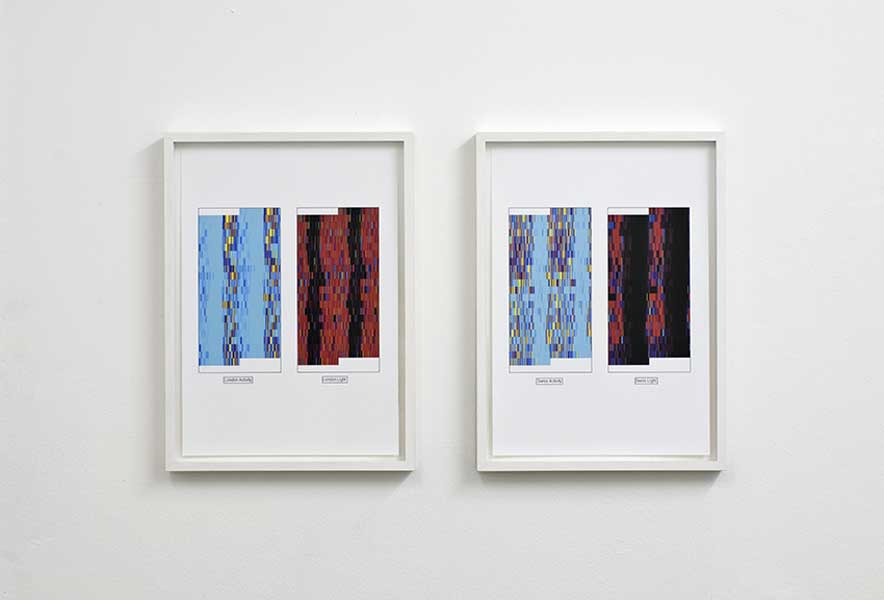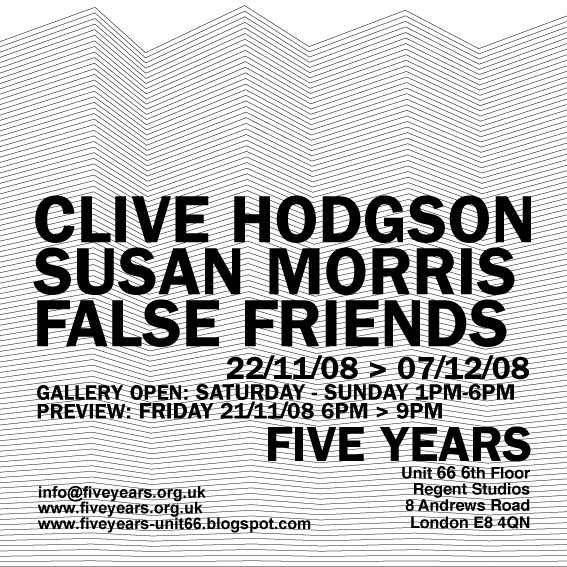
//// //// //// //// ////
//// //// //
FALSE FRIENDS
Clive Hodgson Susan Morris
Five years consists of a membership of thirteen artists, each of whom may present two exhibition projects in the gallery every 18 months. The artists can choose to include their own work in one of these slots if they wish, but the other show must be purely invitational. Aside from these basic rules, each member acts autonomously of the others in deciding the nature and content of their contributions to Five Years’ exhibition programme. The creative freedom that this structure allows operates like an engine, generating a continuous, rapid succession of new projects and continuously branching out into unpredictable territory, beyond the control of any individual directorship.
For the current exhibition, Five Years member Susan Morris invited Clive Hodgson to exhibit his new paintings. Hodgson promptly returned the invitation and suggested that Morris show with him. However, he chose some specific works: a set of conceptually based automatic drawings, or ‘Acitgraphs’, generated by a device worn on the body. Initially hesitant, Morris took some of these to Hodgson’s studio. Both were surprised at certain resonances between these and the paintings. However, what really interested them was the way that each type of work suggested readings of the other that was not apparent when the works existed on their own. While that may not say much more than what we already know about curating, the difference here seemed to be at the level of classification or genre. The paintings seemed less about gesture (which they were not about anyway) and Morris’ machine generated prints seemed more human, more playful. In other words, the pairing drew out painting’s affinities with conceptual-based practices, and vice versa.
Out of their conversation came the idea for the exhibition False Friends, with the title referring to the “Faux Amis” encountered when learning a new language: a false friend is a word that looks or sounds the same as a word in your own tongue but whose meaning is not the same. This transfer of interpretation or meaning seemed analogous to the effect described above, where something familiar presents itself as coming from elsewhere.
ABOUT THE WORK
Susan Morris characterises her work as a sort of drawing or trace which arises, falls, or is made evident by a strategic indirectness - this in contrast to a drawing that presupposes a deliberate and knowing gesture, even if such a gesture is intended to be ‘wild’ or ‘out of control’. Her work often takes the form of evidence gathered over a period of time that reveals patterns or incidents regarding her own life and behaviour over which she can exercise no control. She herself constitutes the obvious ‘subject’ of the work, and to this extent one can talk of self-portraits, but the images or quasi images, information and calibrations that she uses reveal a self that she can’t ever really get to know, and which in a way seems to have a life of its own, and even a ‘voice’ of its own. This is not simply the unconscious, the unacknowledged driver of our psyches. What she encounters is in some ways mundane and corporeal but is also, paradoxically, strangely alien. Patterns, habits, repetitions and lapses configure a language that speaks without knowing what it is saying, or even that it is ‘saying’. These events, ‘drawn’ or translated into the context of language and art, have many apparent resonances, but the uncanny presence of this kind of ‘expression’ reveals a sort of quicksand in relation to language that is hard to categorise.
Whilst it appears obvious, from the rather brazen ‘signature’ of Clive Hodgson’s work, that a self is definitely present here, we are given little real flesh to occupy the signature’s clear statement of identity and presence. No proper portrait emerges. Appended as it is in these paintings, ‘merely’ to a blaze of effect, the name resonates in a hollow way, just as ‘empty vessels make the most noise’. Nor is the signature really a signature, as it varies in style and could almost be seen more as a label of ownership of the painting, as object, like the name we write on a folder, or boldly on a parcel destined for a remote place. In fact the painting here seems not to be validated or claimed post-hoc by the name, as when an artist signs a finished work; the painting and the signing are synonymous and synchronous. More precisely, with this kind of ‘signature’, something normally marginal becomes central to the painting and displaces other ‘content’. It is this gesture and not anything ‘gestural’ that speaks to the equally absent subject in Morris’ work.
The humour within the work of both artists lies in its relation to apparent stabilities and certainties regarding the self and art. Indeed, what sort of relation does something like ‘body language’ have to speech, to writing, to drawing, to art, when it is a manifestation of a subject whose moment is always fugitive and is unknowable in the present? “What am I thinking?” “What am I doing?” are questions that this self cannot answer, or even ask. Nevertheless these questions lie squarely before us, presented by this hidden idiot-savant that may even be our better half.
